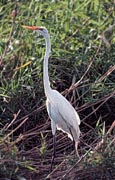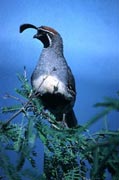Desert Invasion - U.S.Imperial National Wildlife Refuge |
|
Imperial National Wildlife Refuge protects wildlife habitat along 30 miles of the lower Colorado River in Southwest Arizona and California, including the last unchannelized section before the river enters Mexico. The river and its associated backwater lakes and wetlands are a green oasis, contrasting with the surrounding desert mountains. More than 15,000 acres of Imperial National Wildlife Refuge is federally designated wilderness. Wilderness is protected to ensure that nature, not people, is the primary influence on this quiet, scenic place. At one time, the banks of the Colorado River were lined with cottonwood and willow forests, sustained by the river's natural periodic flooding. Animals depended on this green forest oasis for breeding, resting, feeding, and shade. Woodcutting during the steamboat era, clearing for agriculture, wild fire, exotic plants like salt cedar, and use of dams for flood prevention have devastated cottonwood and willow stands along the lower Colorado River. Some animals that depend on these forests, such as the southwestern willow flycatcher, have become endangered. Refuge staff are working with other agencies and organizations to plant cottonwood and willow trees. (Courtesy U.S. Fish and Wildlife Service) Additional information Fish and Wildlife Service Gorp information Bird checklist |





|
|
